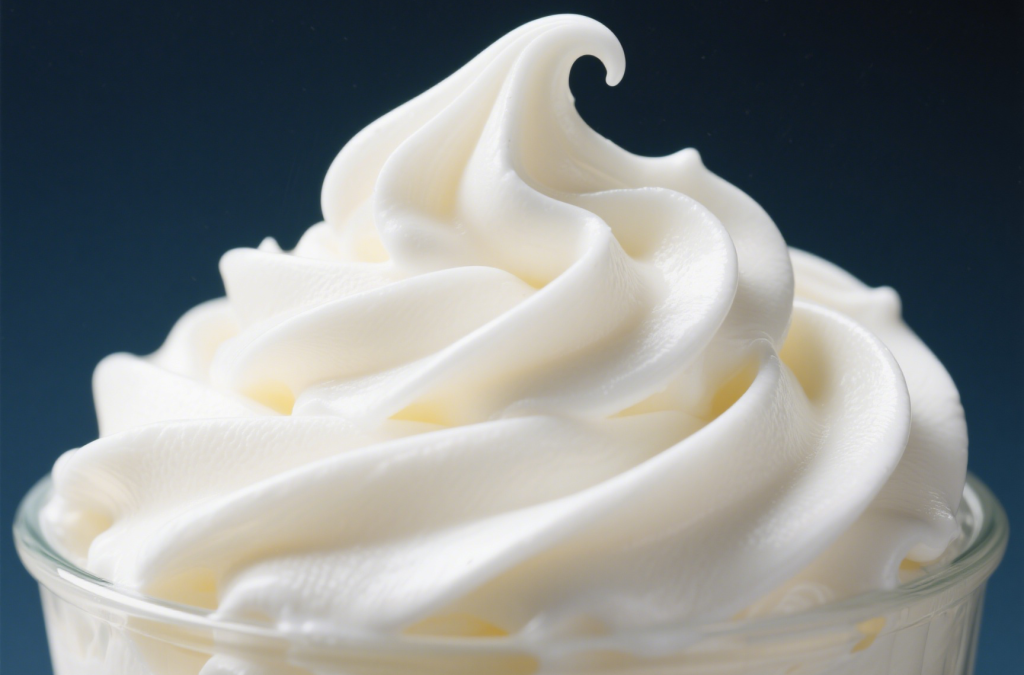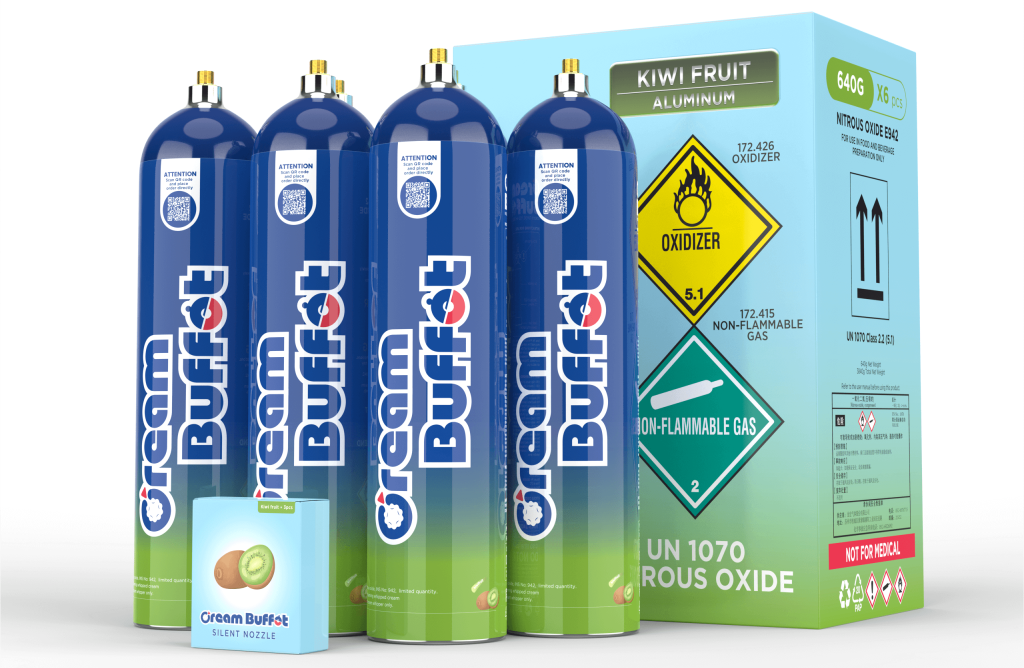Every dessert lover has experienced a kitchen nightmare—whipped cream that turns thin. But don’t worry, whether you’re a baking beginner or an experienced chef, this article will provide you with effective methods to ensure you whip up perfect whipped cream every time. Let’s rescue your desserts, restore your confidence, and make sure every dollop of whipped cream looks perfect!
Common causes of thin whipped cream include high temperatures, overmixing, using low-fat cream, or adding too many ingredients. To fix this, you can refrigerate and rewhip the cream, use cornstarch, gelatin, or cream cheese, or blend a new batch of whipped cream with the thin cream. To prevent this from happening in the future, it’s recommended to choose fresh cream with a high-fat content, store it at low temperatures, and add sugar in moderation.
Let’s rescue your desserts, restore your confidence, and make sure every dollop of whipped cream looks perfect!

1. Why Does Whipped Cream Turn Thin?
Thin whipped cream is one of the most common problems in baking, but do you know why it happens? In fact, there are some physical and chemical principles behind it. Understanding these causes can help you better avoid similar issues and take the right steps to fix them. Here are the most common reasons whipped cream turns thin:
High Temperature: Whipped Cream Needs the Right Temperature
Fat molecules in whipped cream are very stable at low temperatures, so the ability to whip cream is highly temperature-dependent. If the cream is too warm, the fat molecules will melt, causing the cream to fail to form stable foam. The ideal whipping temperature for cream should be below 40°F (around 4°C), so be sure to keep your cream chilled before whipping, especially in hot weather or summer.
Overmixing: Overwhipping Turns Cream into Butter
Some people tend to overwhip their cream, leading to changes in its texture. Overwhipping not only causes the foam to dissipate but also breaks down the fat molecules, turning the cream into butter and liquid, which results in a grainy texture or even butter. If you whip too long, the cream will lose its smooth texture and become greasy.
Using Low-Fat Cream: Insufficient Fat Makes it Hard to Whip
Not all creams are suitable for whipping. Low-fat cream (with less than 30% fat) typically cannot form stable foam effectively. Low-fat cream has a weaker structure, so it doesn’t whip as well as high-fat cream. For optimal results, use heavy cream with a fat content between 36% and 40%, which is best suited for whipping and will provide the most stable foam.
Adding Too Many Ingredients: Excess Sugar, Vanilla, and Liquids
While adding sugar, vanilla extract, or other flavorings is common when whipping cream, overdoing it with sugar or liquid ingredients (like lemon juice or fruit juices) can reduce the cream’s stability, leading to a weakened structure and a thin result. Adding sweeteners and liquids in moderation can enhance the cream’s flavor, but excessive amounts will dilute the cream, affecting the whipping performance.
Expired Cream: Using Expired Cream Affects Whipping
Expired cream undergoes decomposition of its fat components, which negatively impacts its whipping performance. Using expired cream will result in unstable whipped cream. Always choose fresh cream when purchasing and check its expiration date. Additionally, try to avoid using ultra-pasteurized cream, as it undergoes high-temperature treatment, which can make it harder to whip.
2. 5 Quick Fixes for Thin Whipped Cream—Quick Solutions
When you notice that your whipped cream has failed and turned thin, there’s no need to panic. With a few clever fixes, you can quickly rescue your dessert. Here are five simple and effective methods:
Refrigerate and Rewhip
If your whipped cream has turned thin, place it in the fridge for 30 minutes (or, if in a hurry, freeze it for 10 minutes), then start whipping again. This step will return the cream to its ideal low temperature, ensuring the fat in the cream doesn’t melt while whipping. You can also add 1 to 2 tablespoons of cold heavy cream and rewhip in a chilled bowl for better results.
Cornstarch Stabilization Method
If you need to fix thin cream urgently, you can use cornstarch to stabilize it. Mix 1 teaspoon of cornstarch with 2 teaspoons of cold milk, stir until smooth, then heat it until thickened. Let it cool, and gently fold it into the thin whipped cream. Cornstarch helps the cream regain stability and increases its density.
Gelatin Fix Method
Gelatin is a very effective stabilizer that can help fix thin whipped cream. Dissolve ½ teaspoon of gelatin in 1 tablespoon of cold water, microwave it for 10 seconds, then let it cool. Gently mix it into the thin whipped cream. This treatment will make the cream more stable and maintain its foam for a longer time.
Cream Cheese Enhancement Method
Cream cheese is a great stabilizer and can provide extra density to thin whipped cream. Fold 1 to 2 tablespoons of softened cream cheese into the thin whipped cream. This not only increases the stability of the cream but also adds extra flavor and richness to the whipped cream.
Rewhip Fresh Cream
If the thin whipped cream cannot be fixed with other methods, you can try whipping a fresh batch of cream to stiff peaks, then gently mix it with the thin cream at a 1:1 ratio. This method often works very well.

3. Professional Tips: How to Stabilize Whipped Cream—Preventing Future Issues
In addition to fixing the problem, some preventive measures are equally important to ensure perfect whipped cream every time. Here are some professional tips for stabilizing whipped cream:
Chill All Tools
Before whipping cream, refrigerate your mixing bowl and whisk for 10 minutes. This helps reduce the effect of external temperatures on the cream and ensures smoother whipping.
Add Stabilizers Early
During the whipping process, you can add 1 teaspoon of powdered sugar or ¼ teaspoon of vanilla extract. This not only enhances the flavor but also helps stabilize the foam, preventing any issues during the whipping process.
Whip to Stiff Peaks
When whipping cream, keep an eye on its texture. Once the cream forms stable peaks, stop whipping. Overwhipping will turn the cream into butter, losing its ideal texture and appearance.
Avoid Moisture
Moisture is the enemy of whipped cream’s stability. Before whipping, ensure all your tools and bowls are dry. Any tiny amount of moisture can affect the foam, causing the cream to become thin.
Use a Whipped Cream Dispenser
To completely avoid any issues, you can use a Cream Buffet whipped cream dispenser. This dispenser injects nitrous oxide to quickly create stable foam, ensuring perfect whipped cream every time.
4. When to Give Up on Whipped Cream—When to Start Fresh
Not all whipped cream can be saved. If the following situations occur, you may need to discard the cream and start over:
Turned into Butter
If your whipped cream has turned into butter, it means it has been overwhipped, and the structure has broken down. It is impossible to restore it to whipped cream.
Extremely Thin and Cannot Be Thickened
Sometimes, the cream may be too thin due to quality issues or expiration. In such cases, even with fixes, it may not return to its ideal state.
5. How to Prevent Thin Whipped Cream—Long-Term Tips for Perfect Cream
To avoid encountering issues with whipped cream each time, here are some long-term tips:
- Choose High-Quality Cream: High-fat content (36% or more) cream is ideal for whipping.
- Store in a Refrigerated Environment: Keep the cream at low temperatures before use to prevent it from thinning due to heat.
- Use Sugar in Moderation: Sugar not only adds flavor but also helps stabilize the cream. However, excessive sugar may affect the whipping results.
6.Summary
By understanding the causes of thin whipped cream, mastering repair techniques, and taking appropriate preventive measures, you can achieve perfect whipped cream every time. Whether through refrigeration, using cornstarch or gelatin, or utilizing the Cream Buffet whipped cream dispenser, you can easily fix the problem and ensure the success of every dessert.
Try the Cream Buffet whipped cream dispenser today—Cream Buffet teaches you more dessert techniques!